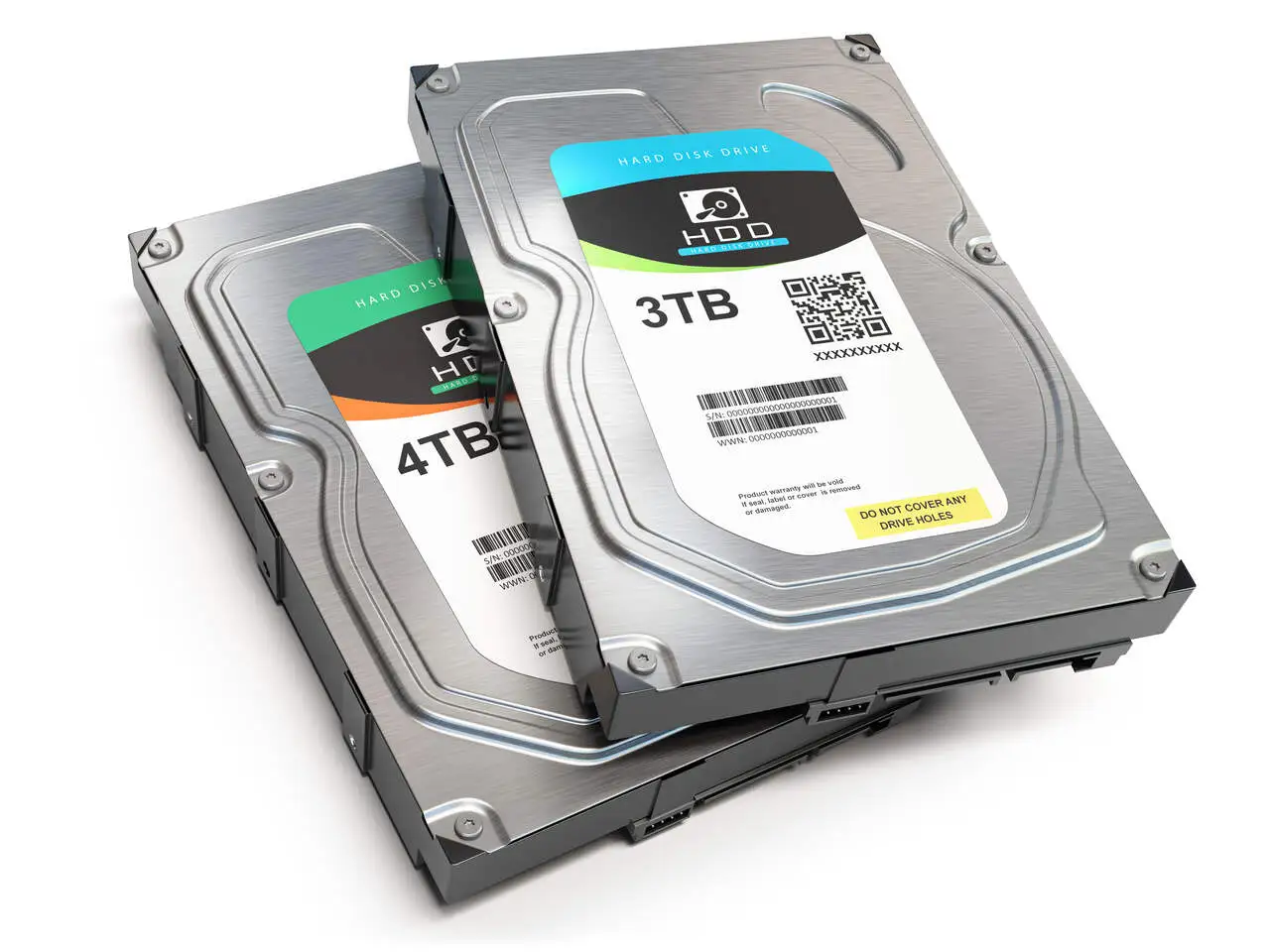Data loss is a real and persistent risk to every hard drive, and this risk is potentially worrying, requiring specific and specialised approaches in order to recover data from a hard drive. HD data loss is not a rare event; on the contrary, it can happen at any time.
Specialising in hard drive data recovery came about as a response to data loss, Digital Recovery specialises in recovering hard drives. There are numerous scenarios that can lead to data loss and this makes recovery an extremely complex process.
The hard drive is a sensitive device, so small knocks can misalign the internal components, putting the stored data at risk, and this is exacerbated when these knocks occur while the hard drive is running. To understand this, it’s important to understand how the hard drive works.
Understanding Hard Disk Drives (HDDs)
The hard drive is a non-volatile data storage device used in computers and other electronic devices. It works by means of a magnetic recording system, which uses read/write heads to write and read data on metal discs coated with magnetic material.
- Platters (Discs): A hard drive consists of one or more metal discs coated with a magnetic substance. These discs are called platters and are mounted on a shaft that rotates at high speed.
- Read/write heads: Each platter has read/write heads, which are small electromagnetic devices positioned on movable arms. These heads are responsible for reading and writing the data on the disc.
- Arm movement and disc rotation: While the platters rotate at high speed, the read/write heads move over the disc surface to access specific areas where the data is stored. This movement is controlled by a precise positioning mechanism.
- Writing and reading data: When data needs to be written to a hard drive, the read/write heads apply magnetic fields to the surface of the disc, which magnetise the particles of magnetic material representing the data. To read the data, the read/write heads detect variations in the magnetic field as they pass over areas of the disc, converting these variations into electrical signals interpreted by the computer. When data needs to be written to a hard drive, the read/write heads apply magnetic fields to the surface of the disc, which magnetise the particles of magnetic material representing the data. To read the data, the read/write heads detect variations in the magnetic field as they pass over areas of the disc, converting these variations into electrical signals interpreted by the computer.
- Controller and interface: The hard drive is controlled by an integrated circuit called a controller, which coordinates all read and write operations, as well as communication with the computer’s motherboard via a data interface such as SATA or IDE.
In short, a hard drive works by spinning magnetic discs while read/write heads move over them to access and modify the stored data. This combination of physical movement and magnetic principles allows for the efficient storage and retrieval of large volumes of data on computing devices.
Common Causes of HD Data Loss
Data loss on a hard drive can occur for a variety of reasons, which can be divided into two main categories: physical failures and logical failures.
Physical faults:
- Mechanical failures: Physical components of the hard drive, such as the disc motor, the read/write arms or the platters themselves, can fail due to wear, mechanical shocks, overheating, or other adverse conditions. This can result in the disc’s inability to spin properly or damage to the magnetic surfaces, leading to data loss.
- Electronic failures: Hard disc integrated circuits can fail due to electrical overload, voltage spikes, short circuits, or other electrical problems. These failures can affect the disc controller, read/write heads or other electronic parts, resulting in the inability to access the stored data.
- Natural or accidental disasters: Events such as fires, floods, falls, physical impacts, or other catastrophes can irreparably damage the hard drive, causing total or partial loss of stored data.
Logical flaws:
- Data corruption: Errors in the file system, corruption of disc sectors, interruptions during write operations, or other software-related problems can corrupt the data stored on the disc, making it unreadable or unusable.
- Accidental deletion: Accidental deletion of files by the user, incorrect formatting of the disc, or other improper operations can result in the loss of important data.
- Malware or virus attacks: Malicious programmes can infect the operating system or the files stored on the hard drive, causing damage to the data or even making it inaccessible.
To mitigate the risk of data loss on a hard drive, it is recommended to regularly back up important data, keep the operating system and security software up to date, avoid rough handling of the disc, and use stable power supplies and electrical surge protectors. In the event of data loss, professional data recovery techniques can be employed, although their effectiveness may vary depending on the nature and extent of the failure.
What to do after identifying data loss?
After noticing data loss on a hard drive, it is important to adopt a careful and systematic approach to minimise further data loss and increase the chances of recovering data from the hard drive. Here are some steps you can take:
- Stop using the hard drive immediately: If you suspect that data has been lost, stop using the hard drive immediately to avoid overwriting the lost data. This includes avoiding installing new programs, saving files or any other activity that could write new data to the disc.
- Identify the cause of the data loss: Try to determine the cause of the data loss, whether it’s a physical failure of the hard drive, a logical error in the file system, accidental deletion of files or another reason. This information can guide the next steps in recovering the lost data.
- Assess the severity of the situation: Determine the extent of the data loss. This can range from the loss of a few files to the complete loss of access to the hard drive. Also assess the importance of the lost data and the impact its recovery will have on your personal or professional activities.
- Consider data recovery options: Depending on the cause and severity of the data loss, you can consider different data recovery options. This could include using data recovery software, professional data recovery services or more advanced data recovery techniques in the event of physical hard drive failure.
- Avoid actions that could make the situation worse: Avoid carrying out operations that could increase the chance of damage to the remaining data or decrease the chances of successful recovery. This includes avoiding the use of unreliable data recovery programmes, attempts to open the hard drive yourself or carrying out data recovery procedures without proper knowledge.
- Make backup copies of the recovered data: If you manage to recover some or all of the lost data, immediately make backup copies of this data on another reliable storage device. This will help prevent future data loss and ensure that you have access to the recovered data in the event of another failure.
- Consider preventative measures to avoid future data loss: After recovering lost data, it’s important to learn from experience and take preventative measures to avoid future data loss. This can include implementing regular backup policies, installing reliable security software and properly maintaining your storage system hardware.
Professional hard drive data recovery
Recovering data from a hard drive is a complex task that requires a thorough understanding of the technical aspects involved. That’s why choosing a company that specialises in recovering data from hard drives is the best choice, as any error can directly affect the integrity of the files and can have a direct impact on recovery.
Digital Recovery has over 25 years’ experience in recovering data from hard drives, but not just hard drives. We have developed solutions that can recover data from the vast majority of storage devices. And our solutions go even further, being able to recover files encrypted by ransomware.
All our processes have been designed to adapt to the client’s real needs, so from the very first contact the client will be in touch with one of our specialists and will be able to clear up any doubts and ease any fears about the recovery.
After the first contact, an initial diagnosis is made, which can be done within 24 working hours. With this diagnosis we can size up the data loss and stipulate the time needed for data recovery to be completed.
A constant feedback routine is established so that the client is aware of every stage of the process. At the end of the recovery process, the data is double-checked so that the client can verify the integrity of all the recovered data.
Count on Digital Recovery’s experience and professionalism to recover data from your hard drive.



